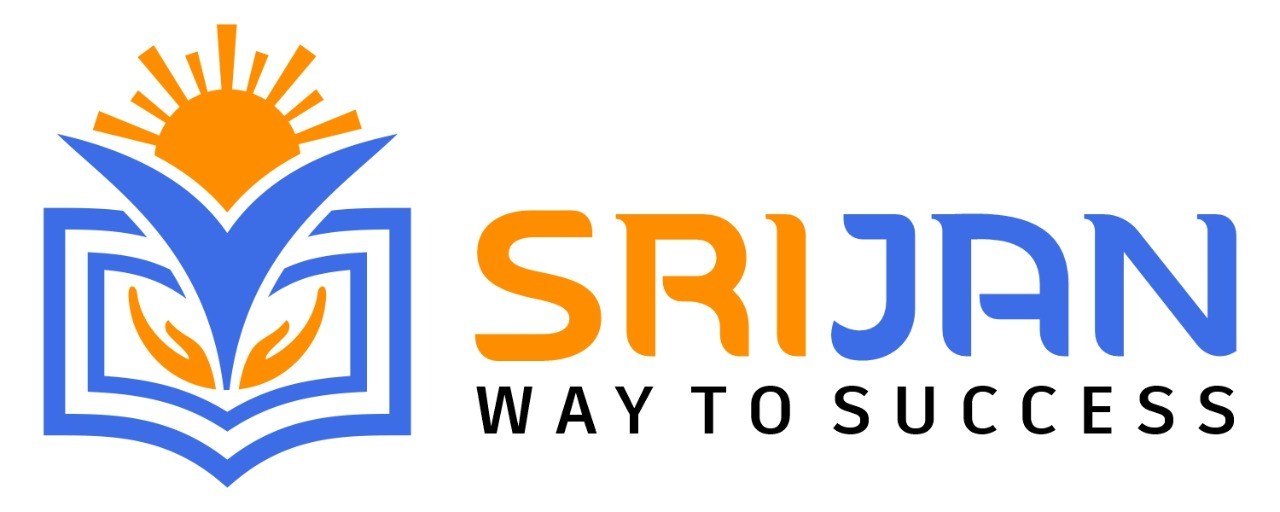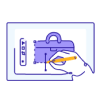Improve User Access Auditing with SAP IAG Solutions
SAP IAG Training || SAP IAG certification Training || SAP IAG Online training || SAP IAG self-paced training || SAP IAG Instructor-Led training
Key Features of Training:
- 30 Hrs Instructor-led Training
- Mock Interview Session
- Project Work & Exercises
- Flexible Schedule
- 24 x 7 Lifetime Support & Access
- Certification and Job Assistance
SAP IAG(Identity Access Governance):
SAP Identity Access Governance (IAG) is a software solution provided by SAP that helps organizations manage and control user access to critical systems and data. It is designed to ensure that the right users have the appropriate access privileges and that unauthorized or excessive access is identified and mitigated. SAP IAG provides tools and features for managing user identities, defining access policies, enforcing segregation of duties (SoD) controls, and monitoring user activity. It allows organizations to streamline their access request and approval processes, automate user provisioning and deprovisioning, and establish a comprehensive framework for access governance and compliance.
Prerequisites: Who can attend SAP IAG Training?
- Identity and Access Management Professionals
- IT Security Professionals
- Compliance Officers and Auditors
- System Administrators
- IT Managers and Project Managers
- Good Communication Skills
Responsibilities of SAP IAG Consultant:
- Requirement Gathering
- Solution Design
- Implementation and Customization
- Testing and Validation
- Training and Documentation
Course Benefits:
- Job opportunities
- Promotion opportunities (Salary Hike)
- Increased productivity
- Improved decision-making
- Gain in-demand skills
What is the future of SAP IAG Consultant?
- Increasing Focus on Security and Compliance
- Evolving Regulatory Landscape
- Cloud and Hybrid Environments
- Integration with Emerging Technologies
- Continuous Improvement and Optimization
The fee for SAP IAG(Identity Access Governance) training can vary depending on several factors such as the location, duration of the course, training format, and level of expertise. SAP offers various training options for IAG, including instructor-led courses, e-learning courses, and virtual live classrooms.
For More details you can Register
SAP IAG(Identity Access Governance) Certification FAQ's:
1. What is SAP IAG certification?
A: SAP IAG certification is a validation of an individual's expertise and knowledge in implementing and managing SAP Identity Access Governance solutions. It confirms that the certified professional possesses the necessary skills to configure and maintain access controls, segregation of duties, compliance measures, and user governance within SAP systems.
2. What are the prerequisites for SAP IAG certification?
A: The prerequisites for SAP IAG certification may vary depending on the specific certification level. Generally, candidates are expected to have a solid understanding of identity and access management concepts, experience in working with SAP systems, and familiarity with SAP IAG functionalities. It is recommended to review the specific prerequisites outlined by SAP or the certification provider.
3. How can I prepare for SAP IAG certification?
A: To prepare for SAP IAG certification, you can take various approaches. Consider attending official SAP training courses specifically designed for SAP IAG. These courses provide in-depth knowledge and hands-on experience with the SAP IAG solution. Additionally, study relevant documentation, review implementation guides, and practice with sample scenarios and exercises. Utilize practice exams or sample questions to assess your readiness for the certification exam.
4. Where can I take the SAP IAG certification exam?
A: SAP certification exams are administered by SAP's authorized education partners or testing centers. You can check the SAP Training and Certification website for a list of authorized partners and available exam locations in your region. Register for the certification exam through the designated channels provided by SAP.
5. What is the format of the SAP IAG certification exam?
A: The format of the SAP IAG certification exam typically consists of multiple-choice questions, scenario-based questions, or a combination of both. The exact structure and number of questions may vary depending on the certification level. It is advisable to review the specific exam details provided by SAP or the certification provider.
6. How long is the SAP IAG certification valid?
A: SAP certifications are typically valid for a specific period, usually two to three years. After the validity period, you may need to renew your certification by passing a recertification exam or meeting other requirements set by SAP. Stay updated with the SAP Training and Certification website for the latest information on certification validity and recertification processes.
7. What are the benefits of SAP IAG certification?
A: SAP IAG certification can offer several benefits, including enhanced career opportunities, increased marketability, and recognition as a qualified SAP IAG professional. It demonstrates your expertise in implementing and managing access governance solutions, which can lead to better job prospects and higher remuneration in the field of identity and access management.
8. How can I maintain my SAP IAG certification?
A: To maintain your SAP IAG certification, you may need to fulfill recertification requirements set by SAP. This could involve passing a recertification exam within a specified timeframe, completing relevant training courses, or participating in continuous learning activities. It is important to stay updated with the recertification guidelines provided by SAP to ensure the validity of your certification.
9. Can I take the SAP IAG certification exam online?
A: Yes, SAP offers online proctored certification exams for certain certifications, including SAP IAG. This allows you to take the exam remotely from your preferred location using a secure online platform. However, the availability of online exams may vary based on your region and the specific certification you are pursuing.
10. What is the cost of SAP IAG certification?
A: The cost of SAP certification exams can vary depending on the country and the specific certification level. It is recommended to check the SAP Training and Certification website or contact SAP's authorized education partners for the most accurate and up-to-date information regarding certification exam fees.
SAP IAG(Identity Access Governance) Certification:
As of my knowledge cutoff in September 2021, there was no specific "SAP IAG Certification" offered by SAP. However, SAP does provide certification programs related to various aspects of identity and access management, including SAP Access Control and SAP Identity Management.
SAP Access Control focuses on managing user access to critical systems and data within an organization. The certification for SAP Access Control is known as "SAP Certified Application Associate - SAP Access Control" and is designed to validate the candidate's knowledge and skills in implementing and maintaining SAP Access Control solutions.
SAP Identity Management, on the other hand, deals with managing user identities and provisioning access across different systems. The certification for SAP Identity Management is called "SAP Certified Application Associate - SAP Identity Management" and verifies the candidate's proficiency in implementing and managing SAP Identity Management solutions.
SAP IAG(Identity Access Governance) Curriculum:
Introduction to Identity and Access Governance
- Understanding identity and access management (IAM) concepts and principles
- Exploring the importance of access controls, user governance, and compliance
SAP IAG Overview and Architecture
- Understanding the features, components, and architecture of SAP Identity Access Governance
- Exploring the integration of SAP IAG with other SAP solutions and system
Access Control and Segregation of Duties (SoD)
- Configuring access controls and permissions within SAP systems
- Managing segregation of duties (SoD) conflicts and risk mitigation strategies
User Provisioning and De-provisioning
- Managing user lifecycle processes, including user provisioning, modification, and de-provisioning
- Configuring automated workflows and approval processes for access requests
Role-Based Access Control (RBAC)
- Designing and implementing role-based access control models in SAP IAG
- Defining roles, role hierarchies, and role mappings to user profiles
Compliance Management and Audit
- Implementing compliance measures and controls within SAP IAG
- Conducting access reviews, audits, and generating compliance reports
User Governance and Self-Service
- Enabling self-service access request and approval workflows for end-users
- Configuring user access review and recertification processes
Risk Analysis and Remediation
- Performing risk analysis and assessment of access controls
- Implementing risk mitigation strategies and remediation measures
Integration and Reporting
- Integrating SAP IAG with other systems and applications for seamless access management
- Generating and analyzing access control reports and dashboards
Best Practices and Advanced Concepts
- Exploring best practices for effective identity and access governance
- Understanding advanced concepts and features in SAP IAG
SAP IAG(Identity Access Governance) Interview Questions and Answers:
1. What is SAP IAG, and why is it important for organizations?
A: SAP IAG, or Identity Access Governance, is a framework and set of processes aimed at managing and securing user identities and access rights within an SAP system. It is important for organizations because it helps ensure proper access controls, mitigates access risks, and ensures compliance with regulations. SAP IAG provides a structured approach to managing user access, reducing the risk of unauthorized activities and potential data breaches.
2. What are the key components of SAP IAG?
A: The key components of SAP IAG include access control design, user provisioning, role-based access control (RBAC), access request and approval, access certification and reviews, reporting and analytics, compliance and audit support, integration with identity management systems, and training and change management.
3. How do you approach the design of access controls in SAP IAG?
A: When designing access controls in SAP IAG, I follow a structured approach. This includes conducting a thorough analysis of business processes, identifying access risks and segregation of duties (SoD) conflicts, designing appropriate controls, and defining roles and responsibilities. I also consider industry best practices, regulatory requirements, and the specific needs of the organization to ensure a comprehensive and effective access control design.
4. How can you ensure compliance with regulatory requirements in SAP IAG?
A: Compliance with regulatory requirements in SAP IAG can be ensured through several measures. These include defining access controls that align with regulatory guidelines, conducting regular access certifications and reviews, implementing audit trails and monitoring mechanisms, and generating reports to demonstrate compliance. Integration with identity management systems can also help synchronize user data and access rights, ensuring compliance across the organization.
5. What is role-based access control (RBAC), and how does it contribute to SAP IAG?
A: Role-based access control (RBAC) is a model that assigns user access privileges based on predefined roles. It contributes to SAP IAG by providing a structured and efficient approach to access management. RBAC allows for the assignment of access rights based on job responsibilities, simplifying the administration of user access and ensuring consistency. RBAC also helps in enforcing segregation of duties (SoD) and reducing the risk of unauthorized access or conflicts of interest.
6. How do you approach access certification and reviews in SAP IAG?
A: Access certification and reviews in SAP IAG involve regular evaluation of user access rights to ensure appropriateness and compliance. I approach this by setting up access certification campaigns, defining review schedules, and automating the certification process. During the certification process, I utilize predefined criteria to determine whether access rights are still required, and I involve the appropriate business stakeholders in the review and approval process. Any access violations or exceptions identified during the certification are investigated and remediated.
7. How do you handle access request and approval workflows in SAP IAG?
A: In SAP IAG, I handle access request and approval workflows by configuring standardized workflows that align with the organization's access policies. I define approval levels based on the access requested and implement segregation of duties (SoD) checks to prevent conflicts. I also ensure that the workflows capture necessary information and provide appropriate notifications to stakeholders. Automating the access request and approval process improves efficiency and enhances access governance.
8. How do you handle segregation of duties (SoD) conflicts in SAP IAG?
A: Handling SoD conflicts in SAP IAG involves identifying critical access risks and defining rules to prevent users from having conflicting access rights. I would perform a thorough analysis of business processes and map them to access privileges to identify potential conflicts. Then, I would design mitigating controls such as approval workflows, role-based access controls, and periodic access reviews to ensure that conflicting access rights are not granted to a single user.
9. Can you explain the process of user provisioning in SAP IAG?
A: User provisioning in SAP IAG involves creating, modifying, and disabling user accounts and access rights. The process typically starts with a user request, which goes through an approval workflow. Once approved, the relevant access rights are provisioned to the user based on their job responsibilities and assigned roles. To ensure efficient provisioning, I would establish standardized workflows, automate the process as much as possible, and integrate with HR systems for user data synchronization.
10. How do you ensure the effectiveness of access controls in SAP IAG?
A: Ensuring the effectiveness of access controls in SAP IAG requires a combination of measures. Firstly, I would regularly conduct access reviews and certifications to validate the appropriateness of user access. Additionally, I would monitor access activities through audit trails and real-time monitoring to detect any unauthorized access or violations. Ongoing analysis of access patterns and risk assessments would help identify areas for improvement and ensure that access controls are adjusted as needed.
11. How do you approach user training and change management in SAP IAG projects?
A: User training and change management are vital for successful SAP IAG projects. I would start by developing training materials and conducting user training sessions to educate users on access governance policies, procedures, and their roles and responsibilities. Additionally, I would create user guides and documentation to serve as references. Change management activities would involve effective communication, stakeholder engagement, and addressing any concerns or resistance to ensure smooth adoption of the new access governance processes.
12. Can you explain the role of reporting and analytics in SAP IAG?
A: Reporting and analytics play a crucial role in SAP IAG by providing insights into access patterns, access violations, and overall access governance effectiveness. I would develop and customize reports and dashboards that highlight key metrics such as user access trends, access violations, and compliance status. These reports would help identify areas of improvement, facilitate decision-making, and support audit requirements by providing a clear view of the access governance landscape.
13. How would you approach an access control review for compliance purposes?
A: When approaching an access control review for compliance purposes, I would follow a systematic process. Firstly, I would identify the relevant compliance requirements and regulations applicable to the organization. Then, I would conduct a comprehensive analysis of the existing access controls, including segregation of duties, critical access risks, and access violations. Any identified gaps or issues would be addressed through appropriate control enhancements, process improvements, or remediation plans to ensure compliance.
14. Can you provide an example of a situation where you successfully addressed an access governance challenge in SAP IAG?
A: In my previous project, we faced an access governance challenge related to excessive user access rights in a critical SAP module. I conducted a thorough analysis of user access and collaborated with business stakeholders to define a streamlined role-based access control structure. By redesigning the access model and implementing a robust access request and approval process, we were able to significantly reduce the number of users with unnecessary access and improve overall access governance, enhancing security and compliance.
15. How do you handle emergency access and privileged user management in SAP IAG?
A: Emergency access and privileged user management in SAP IAG involve granting temporary elevated access to users for critical tasks. I would establish a well-defined process for requesting emergency access, including proper justification and approvals. Privileged user accounts would be managed separately, with strict controls and monitoring in place. Regular reviews and audits of emergency access and privileged user activities would be conducted to ensure compliance and mitigate risks.
16. What strategies would you implement to maintain continuous compliance in SAP IAG?
A: To maintain continuous compliance in SAP IAG, I would implement several strategies. Firstly, I would establish a robust access governance framework that includes regular access certifications, periodic access reviews, and automated controls monitoring. Additionally, I would stay updated on regulatory requirements and industry best practices, ensuring that access controls align with these standards. Ongoing monitoring, auditing, and reporting would provide visibility into compliance status and prompt corrective actions when deviations are identified.
17. How would you approach access control remediation in SAP IAG?
A: Access control remediation in SAP IAG involves addressing identified access violations or deficiencies. I would start by conducting a thorough analysis of the identified issues, categorizing them based on their severity and impact. Then, I would collaborate with business stakeholders to define remediation plans, which could include removing unnecessary access, adjusting roles and responsibilities, or implementing additional controls. Continuous monitoring and follow-up audits would ensure the effectiveness of the remediation efforts.
18. How would you ensure a smooth integration of SAP IAG with other SAP modules or systems?
A: Ensuring a smooth integration of SAP IAG with other SAP modules or systems requires careful planning and coordination. I would collaborate closely with technical teams to understand the integration requirements and dependencies. Thorough testing and validation of the integration points would be performed to ensure proper data synchronization, access control enforcement, and workflow integration. Any issues or conflicts arising from the integration would be promptly addressed through troubleshooting and collaboration with relevant stakeholders.
19. Can you provide an example of a situation where you demonstrated strong problem-solving skills in an SAP IAG project?
A: In a previous SAP IAG project, we encountered a complex segregation of duties (SoD) conflict involving multiple critical business processes. I analyzed the conflicting access rights, engaged with process owners, and conducted in-depth discussions with the business stakeholders. Through a combination of role redesign, process reengineering, and custom access controls, we were able to resolve the conflicts while still maintaining operational efficiency and compliance. This demonstrated my problem-solving skills in finding effective solutions while considering the specific requirements and constraints of the organization.
20. How do you ensure user access is provisioned and deprovisioned in a timely manner in SAP IAG?
A: To ensure timely user access provisioning and deprovisioning in SAP IAG, I would establish well-defined user lifecycle processes. This includes integrating with HR systems to automate user onboarding and offboarding based on employee status changes. Additionally, I would implement user provisioning workflows with appropriate approvals and notifications. Regular monitoring and audits would be conducted to identify any orphaned or dormant accounts that require deprovisioning.
21. How do you handle access-related incidents and security breaches in SAP IAG?
A: Handling access-related incidents and security breaches in SAP IAG requires a swift and coordinated response. I would follow an incident response plan that includes steps such as isolating affected accounts, investigating the incident, and initiating appropriate remedial actions. This may involve disabling compromised accounts, reviewing access logs, and implementing additional security controls. Communication with relevant stakeholders, including IT security teams, is crucial to ensure a coordinated response and minimize the impact of the incident.
22. How do you ensure user identities and access rights are accurate and up to date in SAP IAG?
A: Ensuring accurate and up-to-date user identities and access rights in SAP IAG involves implementing regular user access reviews and certifications. These reviews involve engaging business stakeholders to validate the appropriateness of user access and identify any changes required. Additionally, integration with identity management systems and HR systems enables the automatic synchronization of user data, ensuring that access rights reflect current employee roles and responsibilities.
23. How would you address compliance challenges related to user access in SAP IAG?
A: Addressing compliance challenges related to user access in SAP IAG requires a multi-faceted approach. Firstly, I would ensure that access controls are aligned with applicable regulations and industry standards. Regular access certifications and reviews would be conducted to identify and address any access violations or discrepancies. Furthermore, I would establish a strong governance framework with clear policies, procedures, and documentation to demonstrate compliance. Regular audits and reporting would provide evidence of adherence to compliance requirements.
24. How do you measure the effectiveness of SAP IAG in an organization?
A: Measuring the effectiveness of SAP IAG in an organization involves several key metrics. These include the reduction of access violations and unauthorized access incidents, the percentage of access certifications completed on time, the number of policy violations detected, and the time taken for user access provisioning and deprovisioning. Additionally, regular audits, compliance assessments, and user satisfaction surveys can provide insights into the overall effectiveness of the SAP IAG program.
25. Can you explain the role of continuous monitoring in SAP IAG?
A: Continuous monitoring plays a crucial role in SAP IAG by providing real-time visibility into user access activities and identifying potential risks or violations. It involves monitoring access logs, system events, and user activity to detect anomalies, suspicious behavior, or policy violations. Continuous monitoring enables organizations to proactively address access-related risks and promptly respond to any potential security incidents or compliance issues.
26. How do you ensure that SAP IAG aligns with business objectives and goals?
A: Ensuring that SAP IAG aligns with business objectives and goals requires a collaborative approach. I would actively engage with business stakeholders to understand their needs and priorities. By aligning access controls, provisioning processes, and governance practices with the organization's strategic objectives, I can ensure that SAP IAG supports business operations, enhances security, and enables compliance with regulatory requirements.
27. How do you handle user access recertification in SAP IAG?
A: User access recertification in SAP IAG involves periodic reviews of user access rights to validate their continued appropriateness. I would establish a well-defined recertification process with defined timelines and responsibilities. This includes notifying business stakeholders to review and confirm the access rights of their respective users. Automated workflows and role-based access controls can streamline the recertification process, ensuring timely reviews and mitigating access-related risks.
28. How do you handle access requests for temporary or project-based access in SAP IAG?
A: Handling access requests for temporary or project-based access in SAP IAG involves establishing a separate process for such requests. I would create predefined access templates or roles specifically designed for temporary access needs. Users would submit access requests specifying the duration and justification for the temporary access. Appropriate approvals and monitoring mechanisms would be in place to ensure that temporary access is granted only for the necessary duration and revoked promptly once the requirement is fulfilled.
29. How do you stay updated with the latest developments and trends in SAP IAG?
A: Staying updated with the latest developments and trends in SAP IAG requires continuous learning and active engagement with the industry. I would regularly participate in professional forums, attend conferences, and leverage online resources such as blogs, forums, and webinars. Engaging with SAP communities and networking with professionals in the field can provide valuable insights into emerging technologies, best practices, and industry benchmarks, allowing me to stay at the forefront of SAP IAG advancements.
30. Can you provide an example of a situation where you improved the efficiency or effectiveness of SAP IAG processes?
A: In a previous SAP IAG project, I identified that the access request and approval process was time-consuming and prone to delays. I introduced automation by implementing a self-service access request portal integrated with the organization's ticketing system. This streamlined the access request workflow, reduced manual intervention, and improved the turnaround time for granting access. The enhanced efficiency not only improved user satisfaction but also allowed the access governance team to focus on more critical tasks.
Participants will have 24/7 access to our online lab, providing hands-on experience with SAP IAG tools and scenarios.
This includes server access to S/4 HANA 2023 for 1 year, ensuring you have ample time to practice and apply your skills in a real-world environment.
With this extended access, you can work on projects, explore advanced features, and solidify your understanding of SAP IAG in the latest SAP S/4 HANA version.















